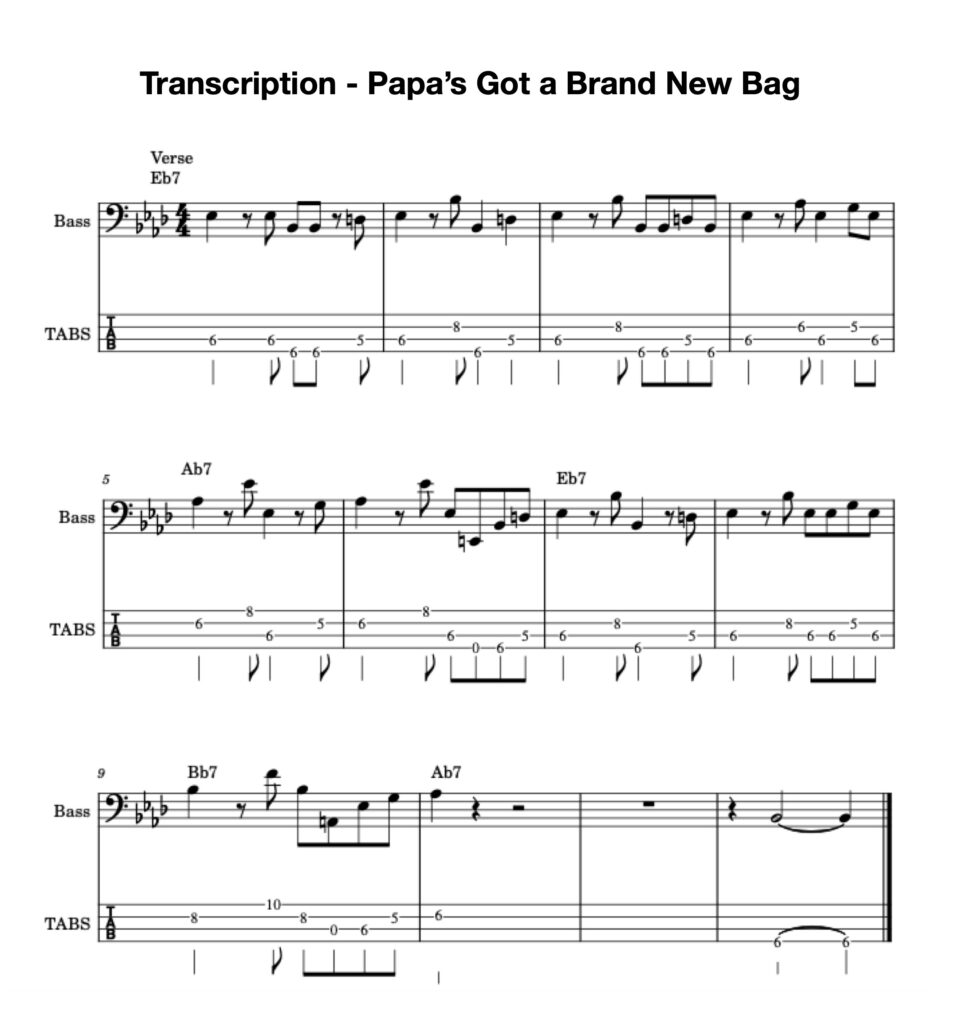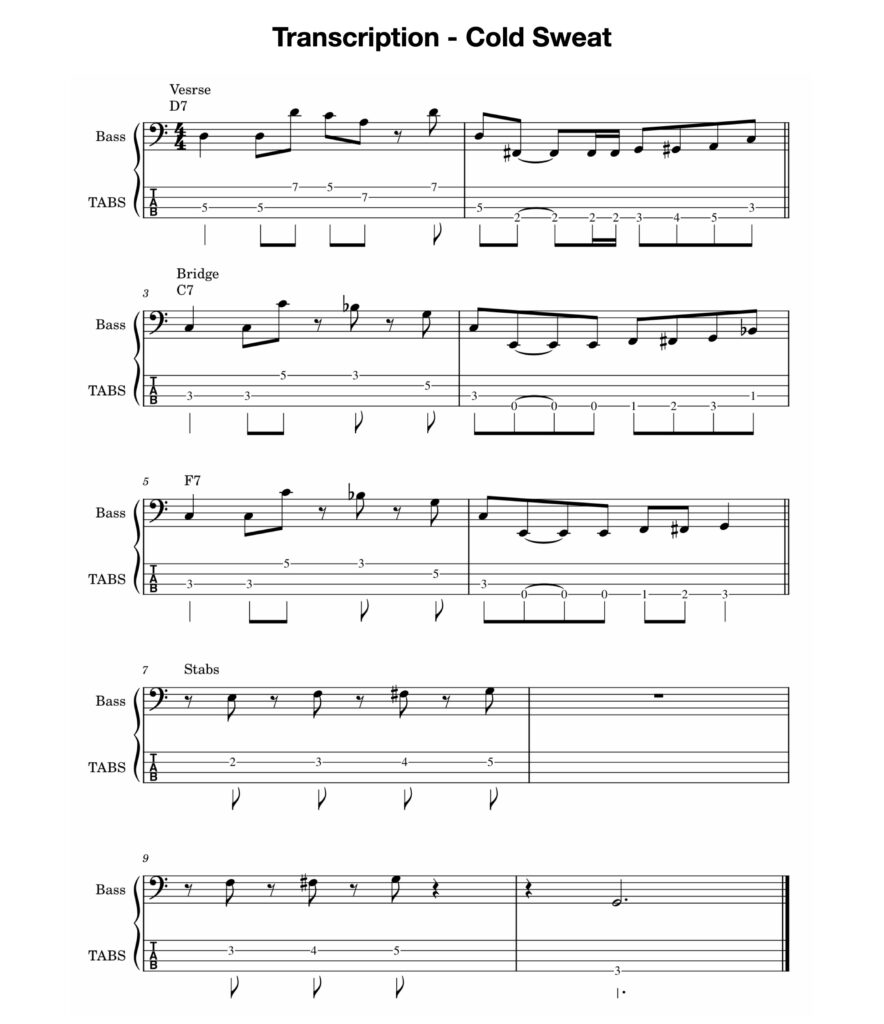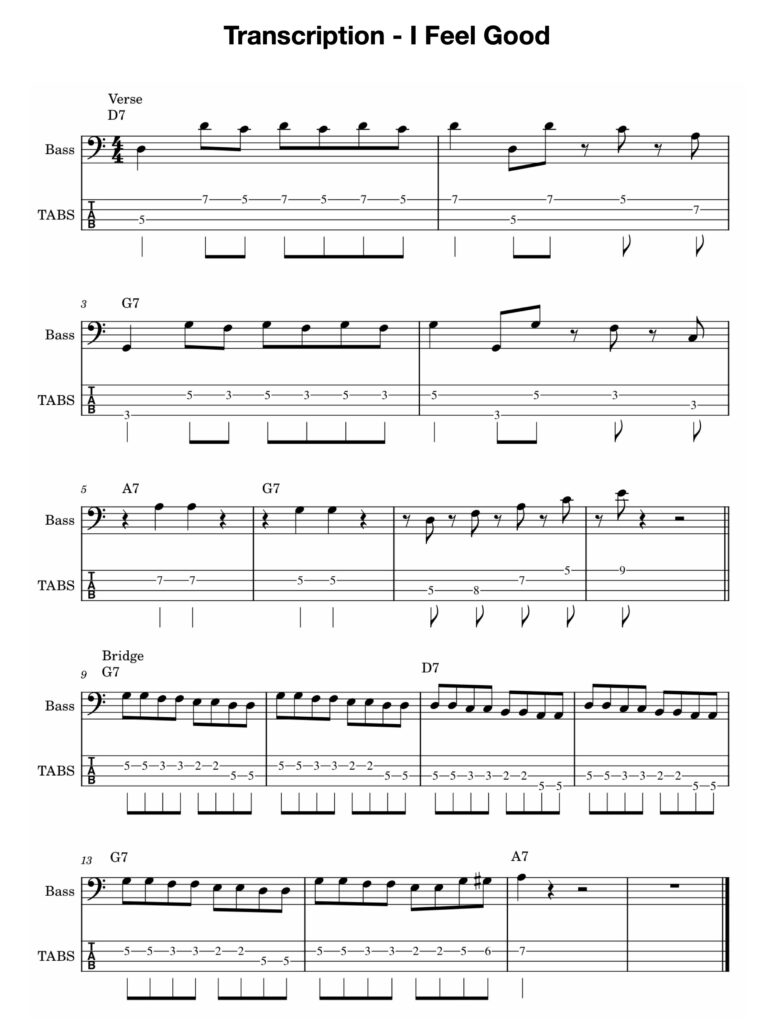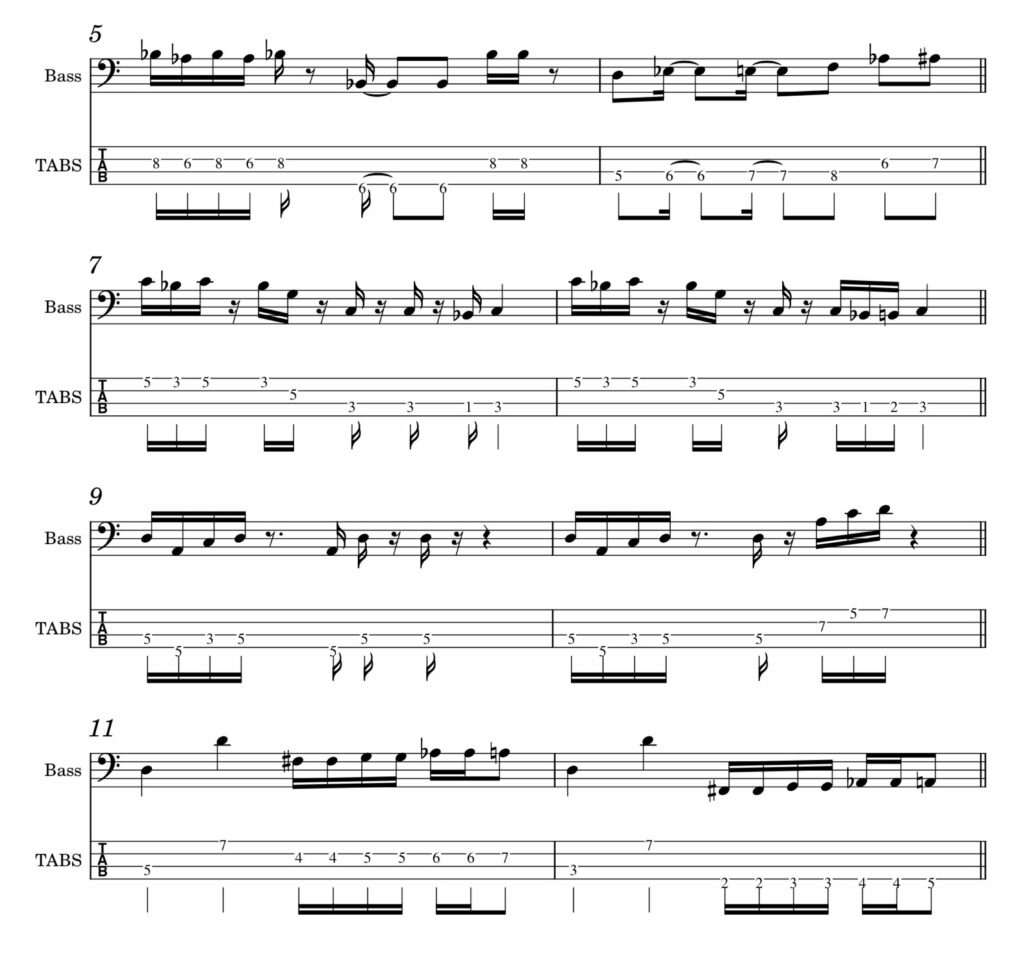The Beginning
Bernard Odum, a legendary bass player, is widely recognised as one of the key figures in the development and popularisation of funk music. With his groovy bass lines and innovative playing style, he helped shape the sound of the genre in the 1960s and left an indelible mark on the music world.
Bernard’s musical journey began when he joined James Brown’s band in 1956. He quickly established himself as a skilled bassist and became an integral part of the group. It was during this time that he made a significant contribution to music history by recording the iconic track “Cold Sweat” in 1967. The song is often regarded as a groundbreaking moment that ushered in a new era of funk music, with Bernard’s bass lines providing a solid foundation for the infectious rhythm.
As a member of James Brown’s band, Bernard also played on other notable hits such as “Papa’s Got a Brand New Bag” and “I Feel Good.” His exceptional bass playing added depth and groove to these songs, contributing to their enduring popularity.
In 1969, due to a pay dispute, most of the musicians in James Brown’s band decided to leave, leading Brown to form a new backing band called The J.B.’s. Although Bernard Odum did not join this new lineup, his contributions to the band during his time with James Brown had already solidified his reputation as a funk bass pioneer.
Following his departure from James Brown’s band, Bernard briefly joined Maceo Parker’s group, Maceo & All the King’s Men, in 1970. He appeared on the album “Doin’ Their Own Thing,” which showcased his exceptional bass playing skills. This album has been highly praised by fellow musicians, with renowned bassist Jaco Pastorius referring to it as the “real deal.” For those seeking to understand the roots of funk bass playing, “Doin’ Their Own Thing” serves as an excellent resource, as Bernard’s bass lines exemplify the essence of the genre.
Bernard Odum’s influence on funk music cannot be overstated. His innovative bass playing, characterised by infectious grooves and rhythmic dexterity, has inspired generations of funk musicians worldwide. Whether it’s his work with James Brown or his contributions to Maceo Parker’s group, Bernard’s musical legacy continues to resonate and captivate audiences to this day. To truly appreciate the origins of funk bass playing, delving into Bernard Odum’s discography is an essential step for any aspiring funk musician or enthusiast.

Bass Line Analysis
Got to Get Cha is one of Bernard’s busiest and most sophisticated bass lines. He doesn’t use thirds, he played the entire bass line around roots, fifths and flat seventh of the chord.
The only variations are a few chromatic passing tones and open E and A strings used in the bridge to facilitate large interval jumps and position shifts.
The groove, from a rhythmic standpoint, is essentially one big unison. The rhythm section plays on the downbeats of one, two and four, both the guitar and the bass avoid the downbeat of three and restart their lines on the second 16th note of that same beat.
In the bridge, with the exception of the second and fourth beats of the first measure, Bernard nails every downbeat and he solidifies the whole section.

Bass Line Analysis
Though this is one of the first funk songs historically speaking, it still follows a traditional 12 bar blues progression. The bass line is characterised by its catchy and rhythmic nature. It predominantly revolves around a repetitive pattern that forms the foundation of the groove.
The bass plays a root & fifth line with single hits on each interval. The major 7th, even if it is not present on a dominant chord, it’s used and helps to set up the repeat of the groove.
There is a strong sense of the down beat on one & three and on beat two and four he plays off beats. This is very important, it really spells out the role of each beat in this song and in early Funk songs in particular.
Now the real question is why he always avoided the 3rd of the chord? James did prefer the ambiguity of the line?
This is difficult to say but if you think of a minor pentatonic over a dominant chord and use the 3rd and the Blue note sporadically you will have the same effect, you will sound more in line with the song and also have the right approach with a few more notes to play with, if you want to play some fills I would still place them on beat two and four.

Bass Line Analysis
Cold Sweat was an important moment in the evolution of funk, great emphasis is placed on the first beat of each measure and it is a one chord vamp with a bridge change.
The song is in the key of D7 but the bass ignores the minor 3rd and prefers a dominant 7th approach. He starts with a root/octave/flat7th/5th phrase in the first measure. He then jumps down to the major 3rd F# on the E string and does a chromatic run up to the 5th (A). This type of chromatic run from the major 3rd to the 5th is typical of many of his lines. Next, Bernard plays the major 7th to return to D, even though the flat 7th (C) was used in measure 1.
The bridge is very interesting, it drops down a whole step and continues the bass verse pattern with subtle changes but there is something of harmonic interest here, in measure 3 the band moves to the IV chord but the bass purposely ignores the change and chooses to play an harmony line.
Certain things are difficult to explain, was this a mistake, was part of the arrangement or simply he liked the sound? We will never know.

Bass Line Analysis
This song is a twelve bar blues with a brass heavy instrumental arrangement similar to Brown’s previous hit Papa’s Got a Brand New Bag. It also features the same emphasis on beat one that characterises Brown’s developing funk style.
The main groove is a two bar phrase that moves back and forth in half steps but in measure 2 it remains on D7.
In measure 2, the bass arpeggiates the D7 chord (root, 7th and 5th), the interesting part comes in measures 11 and 12, the bass climbs through the D9 (R-3-5-7-9) arpeggio on the upbeats of each beat.
After a four bars horn line where the bassist gets to rest, we enter the bridge. The bridge shifts to steady eighth notes that descend through the Mixolydian mode on the I (D7) and IV (G7) chord.
The ending is a variation on bars 9 – 12 of the verse. The figure is played twice, then descends through the D minor pentatonic scale (D-F-G-A-C).
Now have a listen to these two different versions of one of the most famous Funk song, James Brown knew when to take care of business and how to be artistic at the same time.
Scales/Arpeggios
Bernard uses mainly a Mixolydian scale shape when constructing his bass lines with a couple of typical chromatic passages, from the 7th to the Root and from the 3rd to the 5th.
He uses a lot the #4/b5 over dominant chords, you can think of the blue note from the blues scale. Over all his approach is based on root, 5th and 7th frame work.

Rhythmic Approach
His bass playing was often used to anchor the rest of the band and provide a solid foundation for the other instruments, he had a really strong sense of rhythm and his syncopation was on point. His lines have plenty of rhythmic density but what really impress me is the way he creates a groove.
It’s repetitive of course but the grooves are so great and it shows he had a great level of care when coming up with his lines. 8th notes, 16th, emphasis of beat 2 & 4, ties, everything is there. Often he skips the 1st 16th on beat 3, he plays a run with the remaining three 16th and lands on beat 4.
Other times you hear 8th notes off beats on beat one and three or playing two 16th and an 8th note landing on the following beat with a tie, it was all about the syncopation.

Sound & Gear
Bernard Odum possessed a distinct sound that was deeply rooted in the blues. His bass sound has a captivating blend of roundness and darkness, but his bass sound didn’t reach the same deepness level as traditional blues players.
To achieve Bernard Odum’s bass sound, you can make simple adjustments to the EQ settings. Try increasing the bass a little, adding a touch of midrange and reducing the high frequencies. These changes will help you recreate his signature tone and capture the essence of his playing style.
Throughout a significant portion of his career, Bernard Odum relied on a 1956 Fender Precision Bass as his primary instrument. This bass, with the flat wound strings, contributed to the overall character and tonal richness of his playing. The combination of the vintage Fender Precision Bass and the smooth, mellow qualities of flat wound strings helped shape his identity.
In addition to his trusty Fender Precision Bass, Odum also explored other instruments, one notable addition to his arsenal was the Vox “teardrop” bass, which provided him with a different sonic flavour and added versatility to his sound.
During a significant period in his career, specifically towards the end of 1965, James Brown and his band secured an endorsement from Vox. As part of this collaboration, Bernard Odum had the opportunity to experiment with a 120 watt Westminster 1×18 bass combo amp. This powerful amplifier complemented his playing style and allowed his bass lines to be projected with clarity and authority.
Recommended listening
Papa’s Got A Brand New Bag, Cold Sweat, Maceo, Got to get Cha, Maceo & All The Kings Man – Doing Their Own Thing, James Brown – Grits & Soul and I also believe he played the entire album Think! with J.B. and the Famous Flames.
